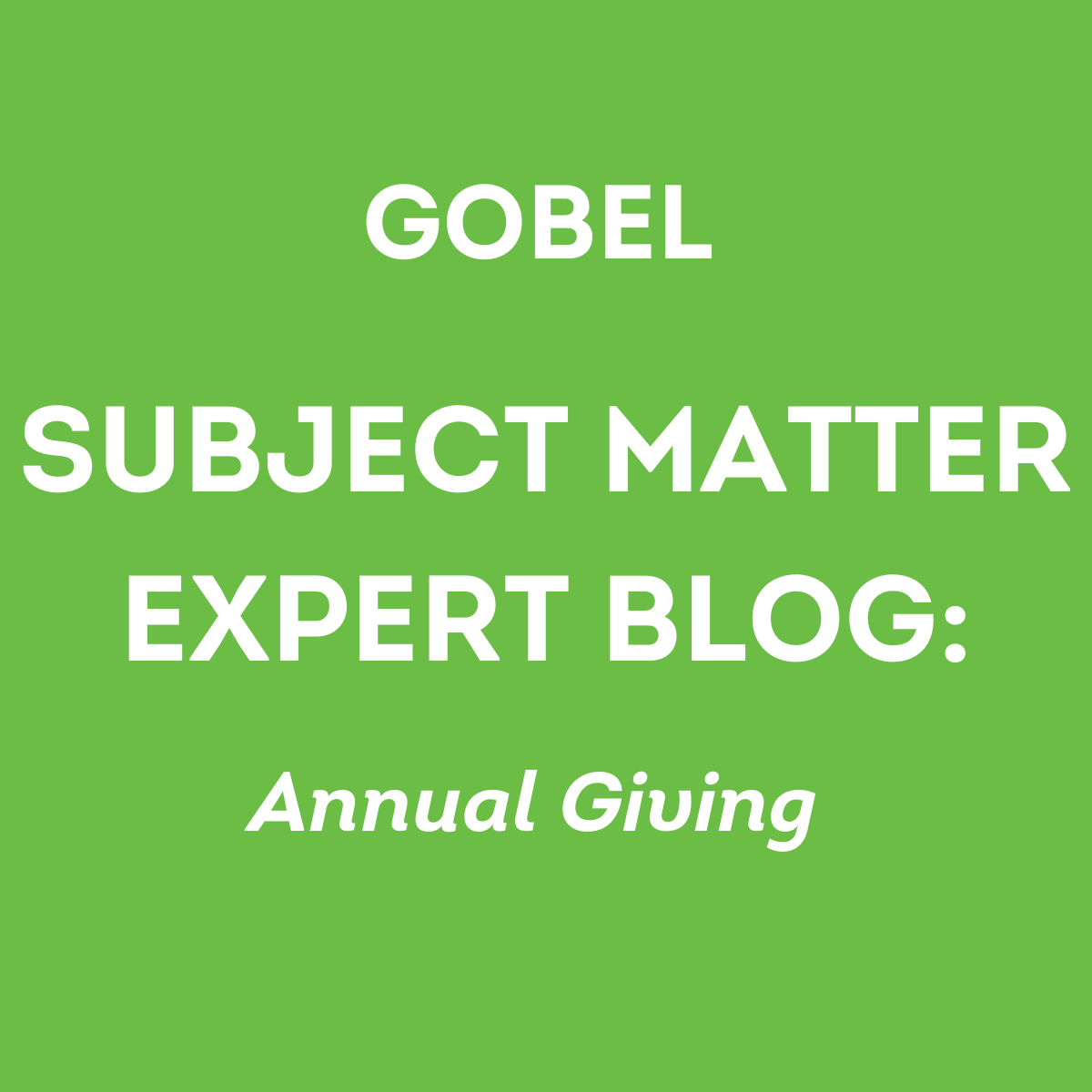
GOBEL Subject Matter Expert Blog: Why Employee Giving Campaigns Matter
By Ann Fisher
Director of Annual Giving, Leadership Annual Giving and Data Services, Michigan Medicine
Many nonprofits struggle with the concept of employee giving. Leadership is afraid of negative feedback about the program, and employees, who do tend to make much less than they would in the business sector, can sometimes feel like we have no right to ask them to give back. Especially right now in healthcare, where we know many of our colleagues are struggling with elevated levels of burnout and staff attrition or fluctuations, it may seem like an employee campaign is more trouble than it is worth.
Despite the challenges, or perhaps because of them, these efforts are important beyond just the dollars they raise for your organization. Employee giving can help build strong bonds between your employees and your organization. At a previous organization where I worked, we did a survey of donors and asked what made them feel most connected to the organization. The No. 1 answer was through their annual gift! Surprised? You shouldn’t be! We so often think about what we get from donors, that we tend to forget what we give them: that warm feeling of doing something good.
Employee giving is a key aspect of building a culture of philanthropy at your organization. But what does this really mean? The Oxford dictionary defines culture as “the customs, arts, social institutions, and achievements of a particular nation, people, or other social group.” To create a culture of philanthropy, you should try to make philanthropy an essential part of who you are as an organization.
Even if your organization does not have an active employee giving campaign, there probably still is a culture of philanthropy that already exists. Your colleagues are very generous people. Personally, I am always seeing announcements for food drives, runs, and walks posted by my coworkers.
You may be asking yourself “Why don’t more employees give to us?” There are a few reasons:
- They do not know that you are a nonprofit. Unlike the American Heart Association or your local food bank, many people do not realize that hospital systems are nonprofits. So, education is an important component of a strong employee giving campaign.
- They are not sure you need money or understand where it goes. Just like any nonprofit, you must help your potential donors understand that their money has an impact.
- You do not ask. The golden rule of giving is that we must ask. There will be those who will not like the message, but that is always true of any annual giving effort. We cannot allow the voices of a few to deny the opportunity for all our colleagues to choose if they wish to give.
Let’s take this a step further.
What if you were to change the culture of your organization to one that embraces employee giving? What does that do beyond the dollars and donors that those employees represent?
Creating or continuing to build a culture of gratitude is important. Your employees are first and foremost members of your community – if you get them on board, imagine the ripple effect that will happen. Employees who are engaged in philanthropy bring that message back to their families, friends, and other members of your community.
Ready to get started on this years’ campaign?
Below you’ll find some tips on running a successful campaign. While every organization is different, here are some best practices we are seeing out in the field:
- Peer leaders are the best communicators for your employee campaign. Messaging from leadership will appear too hierarchical and give a sense that people are required to give. The most successful campaigns are the ones that are structured as peer fundraising efforts. This also creates an opportunity to gamify the campaign and rally your community around something engaging. When it comes to appeals, the stories should be from fellow colleagues in the trenches sharing why they give and what it means to them.
- Personalize everything. Avoid “organization speak” in your copy and over stylized design for your pieces because it will give off an impersonal impression to the audience. Make sure these messages feel like a friend is sharing their story.
- Your audience is key – so is getting them the right message in the right way. For most of us, our employee lists are way too big to mail to everyone, so how do you reach them? New employee orientations, annual benefits renewal messages and messages through team leaders may be some ways. Email can be used, but it is tricky because we know that some employees rarely check it due to the nature of their work. Every organization is different, so you will have to find the best outlets for your messages.
- Not everyone will be your biggest fan. Be prepared for the cranky nondonor. We solicit so many people, it is bound to happen that some will not like it. Be ready with some objection responses that can be shared with leadership so their concerns can be addressed in a positive way.
- Payroll deduction is great! Employees have this wonderful opportunity to give through payroll deduction. It is an easy way to give – and will boost your retention rates. Plus, employees who give through payroll deduction will give more because they can spread it out over time, so always promote payroll deduction.
- Stewardship is essential. This is a unique audience of donors, so we need to be stewarding them to meet their specific needs. Payroll deduction donors are often overlooked because they give regularly and get removed from standard stewardship messaging. We need to make sure we have a solid stewardship plan in place so that our colleagues can feel appreciated and understand the impact of their giving.
If you had any doubt before about employee giving, I hope this article has changed your mind and reenergized you about how employee giving campaigns can have a profound impact on your organization.
Feel free to share some of your best practices in the comments below!
ABOUT GOBEL SUBJECT MATTER EXPERTS: GOBEL Subject Matter Experts are healthcare philanthropy professionals working in some of the top shops in the country, sharing best practices and insights. For more information about GOBEL’s Subject Matter Expert program, or to suggest a topic for coverage, email erezsnyak@gobelgroup.com.
ABOUT THE AUTHOR: Ann Fisher is a fundraising professional with more than 25 years of experience in annual giving. Ann began her career at Hospice of Michigan where she developed numerous skills from data base management to grant and appeals writing. From there she moved on to University of Detroit Mercy where she spend nearly 20 years in annual giving, eventually becoming their Executive Director of Annual Giving and Data Services. During her time at Detroit Mercy, Ann was instrumental in introducing new initiatives like online giving and crowdfunding while also improving the ROI in phone and mail and coordinating the University’s President’s Cabinet leadership giving program. Ann then spent two years at UC San Diego as Senior Director of Integrated Marketing, where she launched their first Day of Giving and restarted their grateful patient giving program. Ann currently works at Michigan Medicine where she serves as Director of Annual Giving, Leadership Annual Giving and Data Services. In 2021 Ann and her colleagues were selected as CASE Platinum Award Finalists in the Best Practices in Fundraising Award for their Nurses Week Campaign, which raised over $80,000 from 1,300 donors during the height of the pandemic. She has also served as a judge for the CASE Circle of Excellence Awards. In her spare time, Ann is an avid runner and has run several half and full marathons as a charity runner to raise money for various causes.

